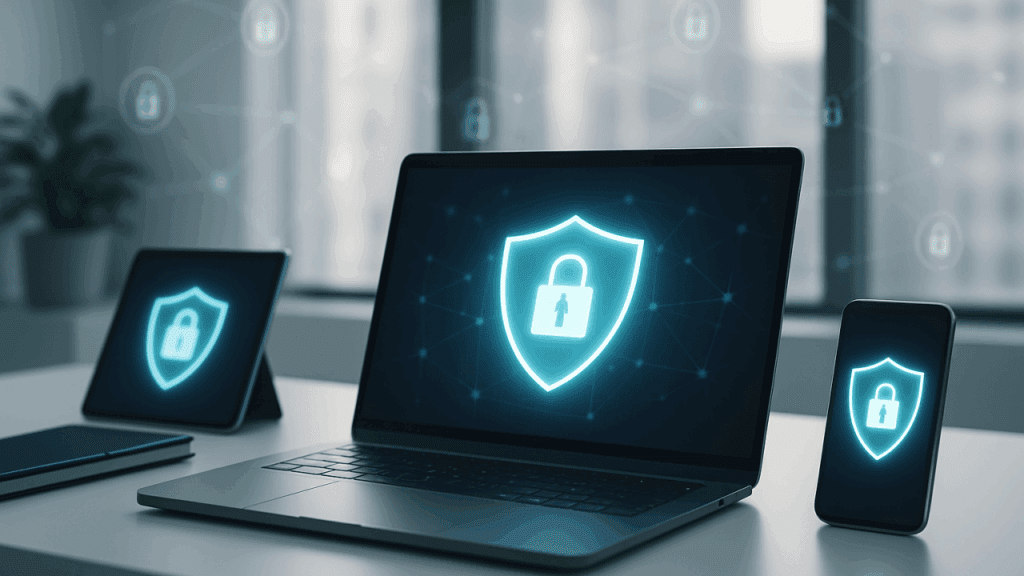What’s Going On in Tech Right Now?
You’ve got antivirus. Your staff use MFA. But all it takes is one laptop with out-of-date software to give hackers full access to your network.
Cyber attacks are no longer “at the gate” — they’re already inside the perimeter.
Remote workers, BYOD devices, cloud apps, even shared Wi-Fi… all of it creates entry points.
That’s why more businesses are ditching the old model of “trust but verify” and moving to Zero Trust Endpoint Protection.
It’s not just for the big end of town anymore.
What This Means for Your Business
The traditional approach assumes everything inside your network is safe — and that once a user logs in, they’re trusted.
That’s a dangerous assumption.
SMBs today face:
- Devices connecting from all over the place
- Staff working on personal laptops and phones
- Apps running in the cloud, not the office
- Ransomware that moves sideways once it gets in
Zero Trust flips the model. Every device, user, and application must prove it’s trustworthy — every time.
Here’s What You Need to Know
What is Zero Trust Endpoint Protection? It’s a modern security model that constantly verifies every connection, request, and device — no matter where it’s coming from.
How it works:
- Every device is continuously validated for security posture (not just at login)
- Access to data or apps is conditional — based on device health, user behaviour, and context
- If something doesn’t look right, access is blocked or limited automatically
Why this matters:
- Antivirus isn’t enough. It catches known threats, but Zero Trust stops unknown behaviours before they cause damage.
- It’s proactive. It doesn’t wait for a breach to act — it prevents suspicious activity from spreading.
- It protects remote teams. Whether your staff are in the office, at home, or on the go — their device must meet security standards or they’re denied access.
Common myths:
- “We’re too small for Zero Trust.” → Not true. SMBs are the most targeted because they have weaker defences.
- “It’ll slow down productivity.” → In reality, most users won’t even notice it — unless their device is risky.
- “It’s too expensive.” → Not when you compare it to the cost of downtime, breach fines, or reputational loss.
What You Can Do Right Now
Here’s how to get started with Zero Trust the smart way:
✅ Audit your endpoints. Do you know what devices are accessing your systems? Are they patched and protected?
✅ Implement conditional access. Only allow access to sensitive data from secure, compliant devices.
✅ Use a modern endpoint protection platform. Look for solutions that go beyond antivirus — with real-time detection, response, and Zero Trust capabilities.
✅ Enforce updates and policies. Unpatched devices are one of the biggest risks. Push updates automatically and block risky devices.
✅ Talk to your IT provider. Ask: Are we still relying on outdated trust models? What’s our Zero Trust roadmap?
A Real-Life Example
One of our Melbourne-based clients had a contractor’s laptop connect to their internal systems while infected with malware — despite having antivirus.
Because they had Zero Trust Endpoint Protection enabled, the system flagged the device as non-compliant and blocked it from accessing any data.
No alert. No drama. Just automatic protection that saved them from what could’ve been a massive incident.
The Bigger Picture
Zero Trust isn’t just a security upgrade — it’s a mindset shift.
It helps businesses:
- Meet compliance requirements (like SMB1001, Essential Eight, ISO 27001, etc.)
- Secure remote and hybrid workforces
- Reduce the attack surface without relying on human judgement
- Build customer trust by showing you take security seriously
Why This Matters More Than Ever
Cyber threats don’t knock. They sneak in quietly.
Relying on outdated tools or old trust models is like leaving your business door unlocked and hoping no one notices.
Zero Trust Endpoint Protection puts you back in control — not just of devices, but of your entire digital environment.
It’s no longer a “nice to have.” It’s a must.
Quick Win of the Month
Disable admin rights on employee devices. Most malware needs elevated privileges to run. Blocking admin access stops a huge range of attacks before they start.
Ask the Expert
Q: Can I keep my existing antivirus and still use Zero Trust?
A: Absolutely. In fact, modern Zero Trust platforms complement your existing antivirus — they provide the policy enforcement and behavioural protection that traditional AV misses.
Get in Touch
Not sure if your devices are truly protected — or just seem like they are?
Book a free 15-minute endpoint security check — we’ll walk you through it, no tech jargon.



